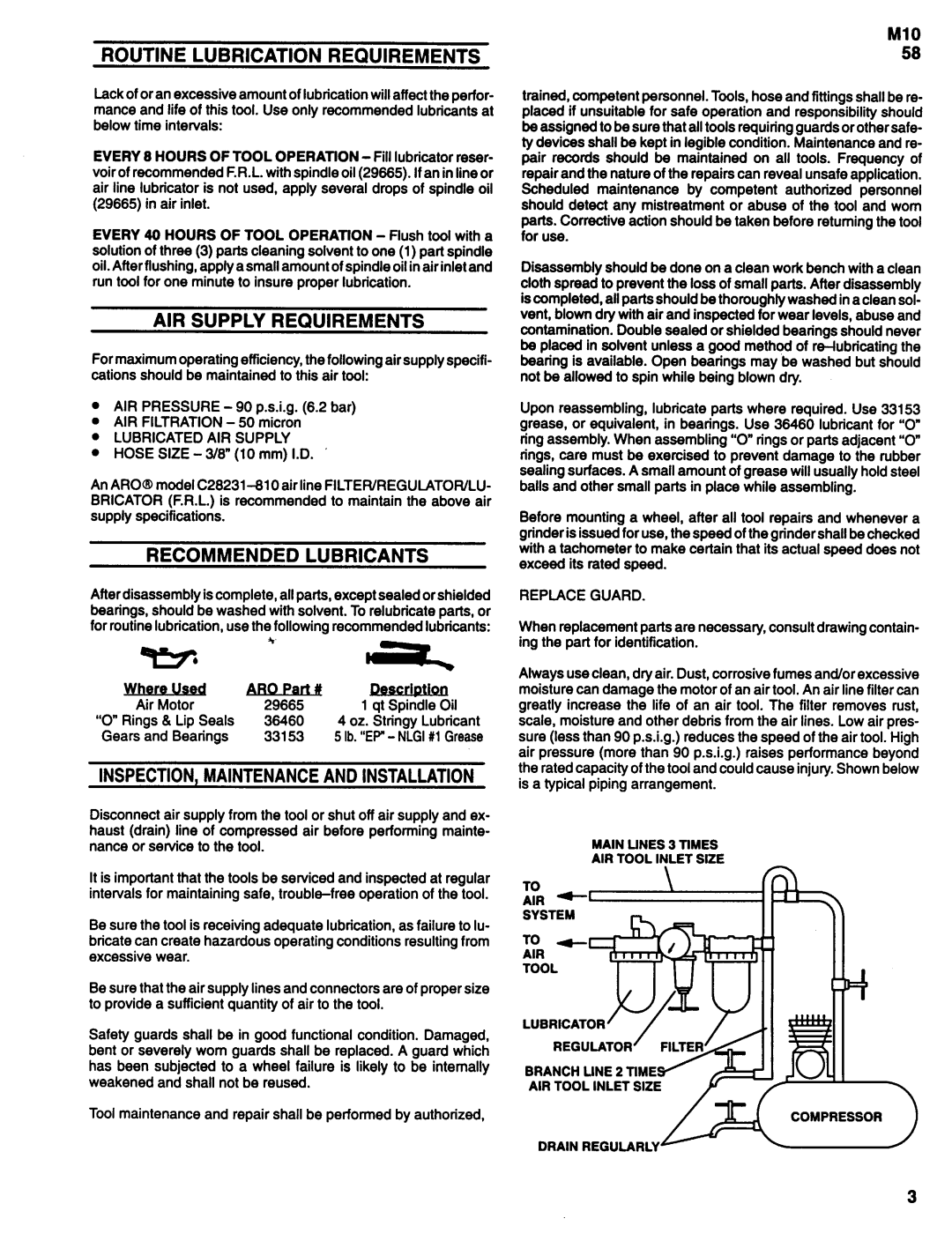7873-F, 7872-F, 7870-F-( ), 7871-F-( ) specifications
Ingersoll-Rand is recognized for its innovative and reliable products in the field of industrial equipment, particularly in the area of rotary compressors and pneumatic tools. Among their notable offerings are the 7871-F, 7870-F, 7872-F, and 7873-F impact wrenches, which are designed to meet the rigorous demands of various professionals.The Ingersoll-Rand 7871-F-( ), 7870-F-( ), 7872-F, and 7873-F series are characterized by their lightweight design, combined with robust construction that ensures durability. This series of impact wrenches is specifically engineered for high performance and offers an excellent balance of torque and speed, making them suitable for a wide range of applications in automotive, construction, and industrial settings.
One of the main features of these wrenches is their powerful motor, which provides a high torque output, essential for demanding tasks such as lug nut removal and heavy-duty fastening. The tools are equipped with advanced impact mechanism technology, which enhances their efficiency and allows for an optimal power-to-weight ratio. Additionally, the user-friendly controls and ergonomically designed grips ensure maximum comfort during prolonged use.
The 7870-F and 7871-F-( ) models, in particular, boast an adjustable power regulator that allows users to select the optimal torque for different applications. This level of customization is crucial in allowing technicians to work with precision, thereby reducing the risk of damage to fasteners or workpieces. The 7872-F and 7873-F models, on the other hand, focus on features like a higher free speed and extended service intervals, making them ideal for professionals who need reliable tools without frequent maintenance.
All models in this series also showcase Ingersoll-Rand's commitment to technological advancement, incorporating features such as anti-vibration technology that minimizes user fatigue and contributes to better handling. Furthermore, their motors are designed to be energy-efficient, which aligns with modern environmental standards, making them an eco-friendly choice in the industry.
In summary, the Ingersoll-Rand 7871-F-( ), 7870-F-( ), 7872-F, and 7873-F impact wrenches epitomize reliability, performance, and innovation. With powerful motors, user-centric designs, and advanced features, these tools are not only built to last but also to enhance the efficiency of every job they’re used for. Whether for automotive repair or heavy machinery assembly, these impact wrenches stand out as top choices in the competitive market of pneumatic tools.

